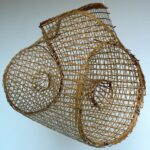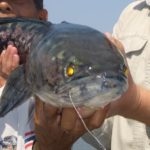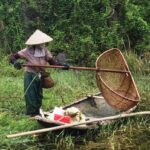Most Thai water channels, khlongs, and streams are clogged with a variety of water plants, predominantly Common Water Hyacinth (Eichhornia crassipes). This invasive species was introduced in 1901 by Thai Royalty from Indonesia and was supposed to be eradicated by the Water Hyacinth Disposal Act of 1913, which, however, had no effect. Nowadays, enormous efforts are necessary to remove them partly from navigational rivers.

The only actual uses of this plant are for producing biofuel and as alternative weaving material for bags and handcrafts. Fishermen don’t like Eichhornia crassipes at all, as it hinders angling and netting and hides away a variety of fish, frogs, and shrimps. But fish netting around these water plants is productive.
Circumferencing water plants – a labor-intensive but productive fishing method
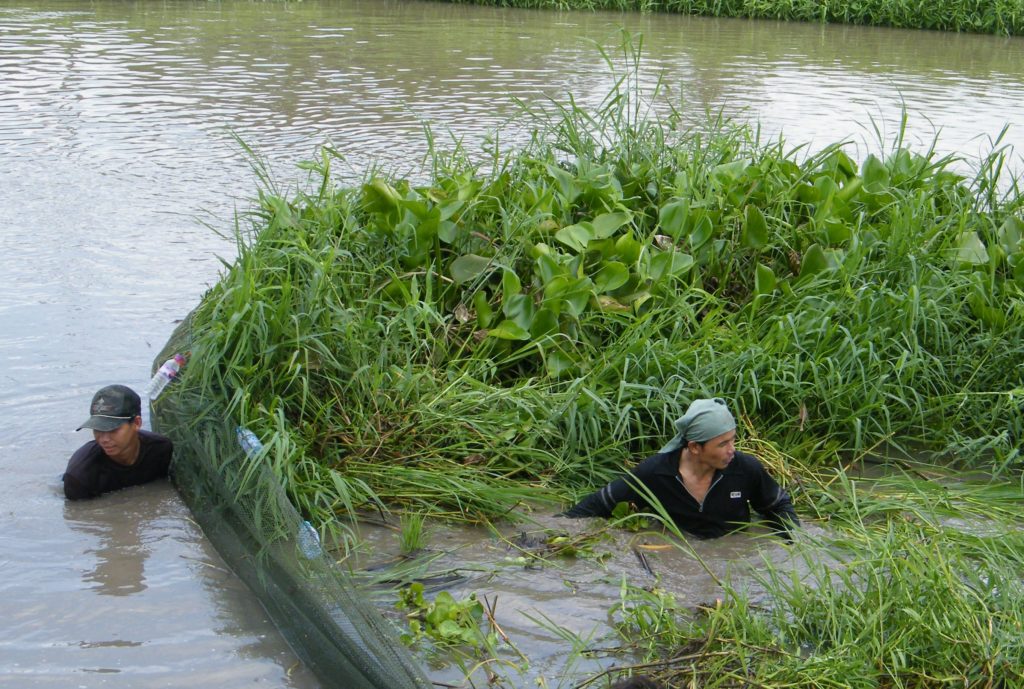
Inventive fishermen adopted the proven ‘hand dragged seine net’ technique by circumferencing water plants, especially Eichhornia patches. They drag these patches on land and pick out hiding animals from within the mass of water plants.

Depending on the size of the chosen patch, at least three people are necessary to circumvent and drag out the net; at larger patches, additional persons are necessary to catch fish, frogs, and shrimp within the seine net with a hand net.
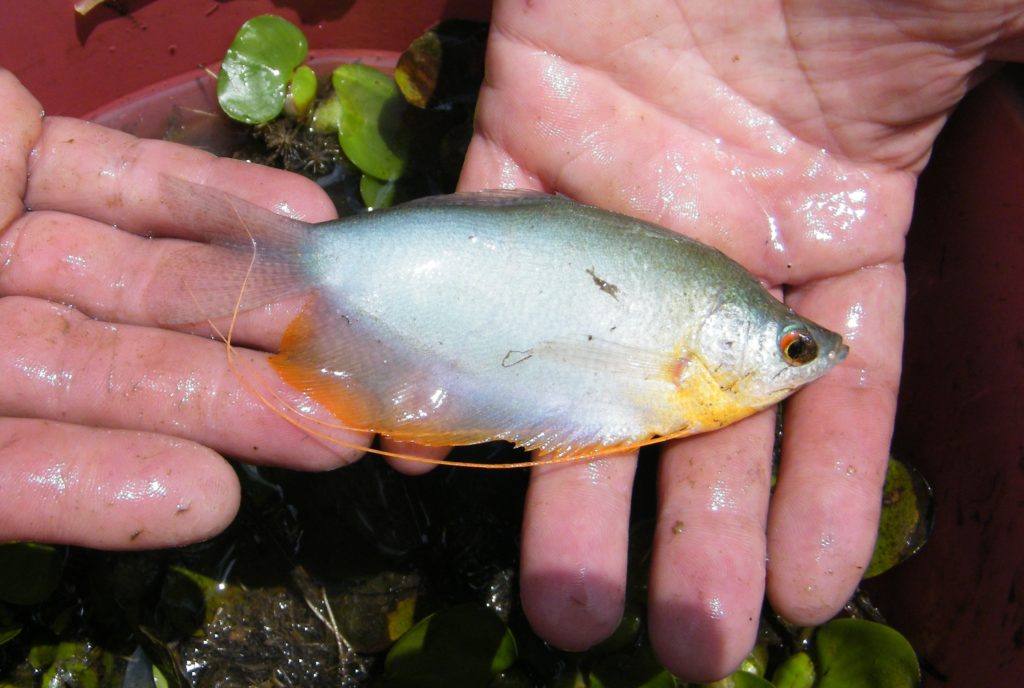
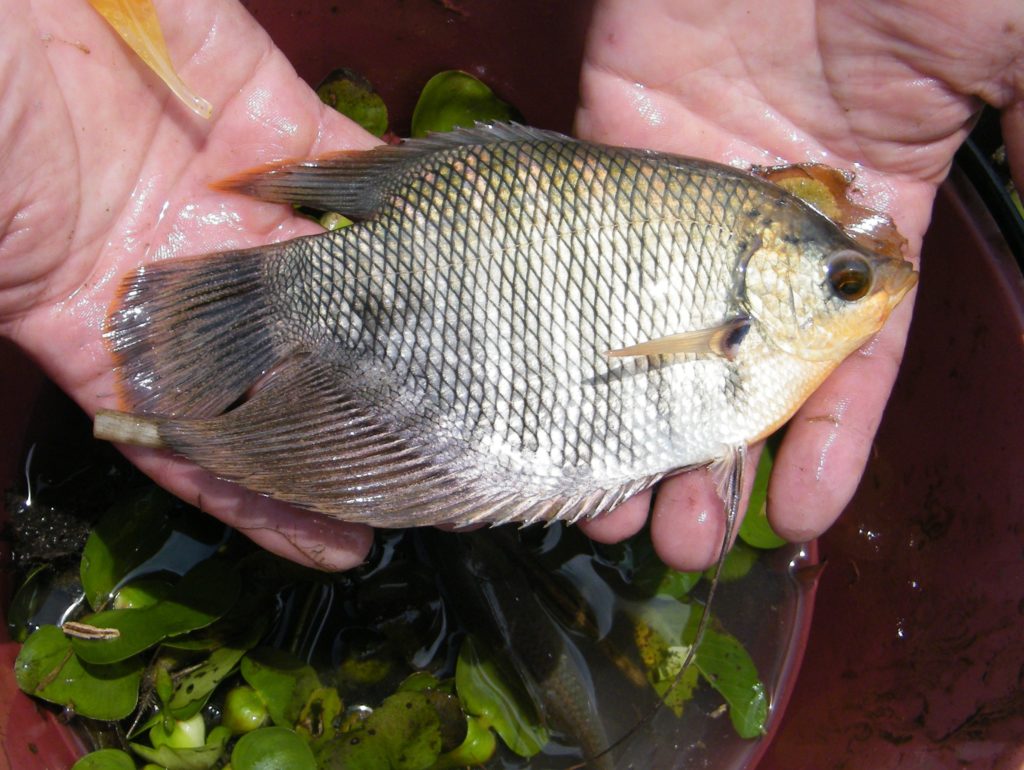
As very often not only table fish but also ornamental fish are caught for sale to aquarium dealers, this method is an additional way of raising cash for the families.
Lessons learned about seine net fishing of areas covered by water plants
- It is hard work for fish netting around water plants in such a way that the sinker line keeps to the bottom during dragging and to avoid the escape of bigger fish species.
- It is still harder work to drag the mass of plants on land.
- It is a great joy to find a fantastic variety of fish within the harvested plants—many of them I have never personally seen before.
.


